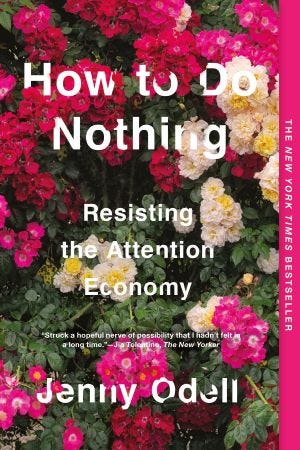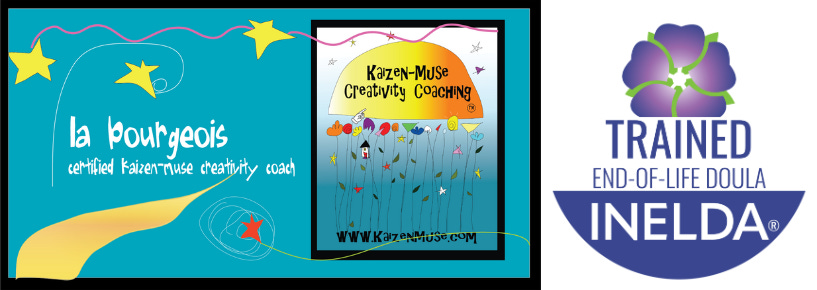Do you have a story about how you felt like a thriving creative, even for just a moment, and how that changed you? Maybe you read a book that inspired, or experienced a project, performance, art piece, or something else that made a difference in your creative life? Click here to get more information on writing for the Thriving Creative!
As creative people who want to turn our art and/or craft into a business, we use social media to grow our audiences, advertise new products and events, and maintain a connection with our patrons. And I’m not alone in keeping in touch with family and friends across the country through Facebook, Instagram and Substack, among others.
But social media also barters our attention for its existence, as seen with the algorithms serving us memes and other enticing things to keep us scrolling for hours without realizing it. These hours can leave us feeling almost ill in both body and spirit with artificially-induced panic and disconnection from our here-and-now as well as the natural world. In How to Do Nothing: Resisting the Attention Economy, Jenny Odell argues that disengaging from social media helps us to live fuller, more creative lives. So how do we disengage from the evils of social media without losing what makes it helpful?
What is the Attention Economy?
When Odell references the attention economy, she’s talking about the way that social media demands our attention and then sells it to the highest bidder. To keep our attention, these social media corporations like Meta, YouTube and TikTok use algorithms to predict what we might like to see next and serve that up to us.
But does that make us happier? Well, when was the last time you finished doomscrolling and thought, “Oh yeah! That made my life better”?
If your answer was “never,” then you might be considering why that is. Odell proposes that when we get trapped in a space that doesn’t challenge our identities, ideas and abilities, we begin to descend into a spiral of boredom and anxiety. We need the challenge and the inspiration of the unusual and the new to keep us interested. And, interestingly enough, that can come from simply sitting still and doing nothing but observing the actual analog world that surrounds us. Talking to someone face-to-face. Sitting in the park and watching the birds. Getting curious about something and going to the library to research it rather than just doing a quick Google search.
In order to keep us scrolling, social media attempts to keep us attached to a “fearful present” by requiring public knee-jerk reactions rather than allowing the time to find and engage with context around different issues. And we seem to crave context as we move through this time, as seen by the rise of the historian Heather Cox Richardson and her Substack, Letter from an American, right after the publication of How to Do Nothing back in 2019. This newsletter grew to over one million subscribers within a year, and all that it does is give historical context for the current political situation. Whatever your feelings about her political positions, the reaction of that many people definitely gives weight to Odell’s position that the attention economy has left many folks starving for deeper meaning.
Breaking the Social Media Habit
So, how do we break the social media habit? Or how can we engage with social media in healthier ways? Odell suggests that to get out of a bad habit, we need to replace the behavior with something else. “To me, the only habit worth ‘designing for’ is the habit of questioning one’s habitual ways of seeing, and that is what artists, writers, and musicians help us to do,” she says. “It’s in the realm of poetics that we learn how to encounter. Significantly, these encounters are not optimized to ‘empower’ us by making us happier or more productive. In fact, they may actually completely unsettle the priorities of the productive self and even the boundaries between self and other. Rather than providing us with drop-down menus, they confront us with serious questions, the answering of which may change us irreversibly.”
On this front, engaging with our own creativity can assist us (and others) in resisting the siren call of the attention economy. Above my desk, a cross stitched piece declares, “To Create is To Resist,” a quote from Stéphane Hessel. This call reminds me that any attempt at creative expression, no matter how small, is a fight against the normal way of being. Even a new recipe asks its consumer to engage in delight, to explore new tastes, and connect with personal and global history.
Odell suggests that another way of breaking out of the social media habit is to start answering “yes or no” questions in a creative way as Diogenes, the great Greek curmudgeon, would. For example, if someone asks “Do you want to go see the new Superman movie?” you might respond with “Yes, but not at that cinema,” or “No, but I’d like to see a different film” or even “Yes, but I’m going to make fun of it the whole time.” Reframing your response in this way leads to more interesting conversations with surprising outcomes. Very different than what happens on social media as it tries to please you in order to keep your eyeballs locked on the screen.
This “third space” of refusing to answer a question as asked represents a liminal space filled with the potential of creativity. However, because of the focus on productivity within our capitalist economy, will, desire, and training are necessary to find, inhabit and remain in this “third space” within our lives.
But we can do it!
The practice of redirecting our attention from social media to something else is similar to the practice of meditation. If you’ve ever tried meditating, you know that despite your best efforts, thoughts will arise and drift through your mind. The trick is that, when you become aware of the thought, you clear your mind again. By doing this over and over, you train your mind to meditate. The same thing happens with redirecting and sustaining our attention where we want to engage. We realize that we are not unwavering but rather that, in the inevitable drift of our attention, we are able to continually pull it back to the thing we want to be focusing on.
Do not judge yourself for failing. Rather, feel the success and empowerment that comes from returning to the task again and again. You are strong in your resilience. The practice of paying attention to something new is a practice, not a single task to be completed.
So, after finishing How to Do Nothing, do I have the answer for how to balance out those two edges of the social media sword? Well, this is what emerged for me after reading Odell’s manifesto. My new intent is to engage with social media with as much attention as I need and, when I find myself mindlessly scrolling, to stop myself, put down the phone and instead interact with the people, pets, plants and wildlife in my region. I’ve turned off notifications so I can interact with the apps as I wish. Basically, I’m opting for a mindful attention rather than a mindless distraction.
What has worked for you to balance social media’s persistent call and the needs of your real life? What thoughts arise as you consider working with social media mindfully?
After all, there are many, many ways to do nothing.
If you’d like to read How to Do Nothing; Resisting the Attention Economy by Jenny Odell, pick up a copy at your local library, indie bookshop, or online.
Our next Book for Thriving Creatives is Margo’s Got Money Troubles by Rufi Thorpe. This hilarious and heartwarming novel takes you on a journey with Margo Millet, a new single mother whose father moves in with her as she teeters on the verge of eviction. Her solution? Start an OnlyFans. What no one else will tell you about this book is that it takes you through the good advice and terrifying lessons of starting a creative internet business. Grab your copy online, at the library, or by dropping by your favorite indie bookstore.
*Affiliate links lead you to Bookshop.org which shares a portion of the proceeds with independent bookshops, so make sure to select your favorite indie bookstore if you order through them. It’s a win-win-win!!
I’m LA (as in tra-la-la) Bourgeois, a writer, KMCC-certified creativity coach, and end-of-life doula empowering you to think differently and unlock your creativity to do whatever you want to do!
Together, we’ll overcome obstacles, disarm fear and overwhelm, and free you from perfectionism and procrastination. Whether you’re looking to deepen your relationship with your patrons, create your bucket-list project, or ignite the passion for creativity again, let’s confront your obstacles together.
Click here to explore coaching options or contact me at la@labourgeois.biz to ask questions and schedule an exploratory call.




